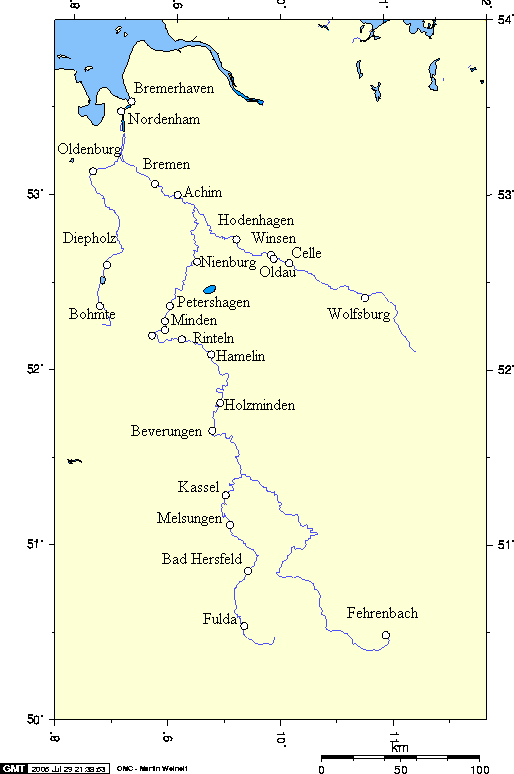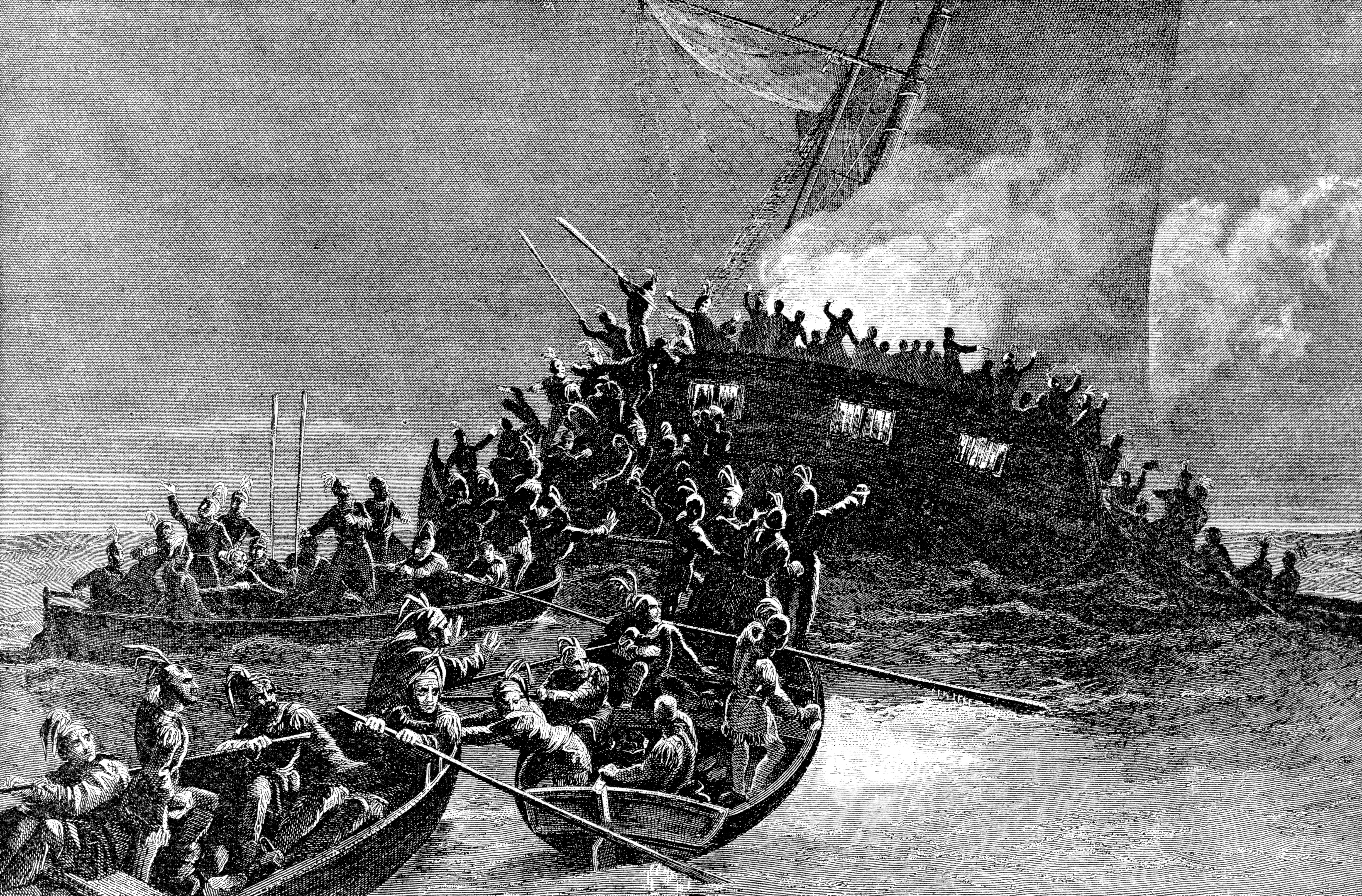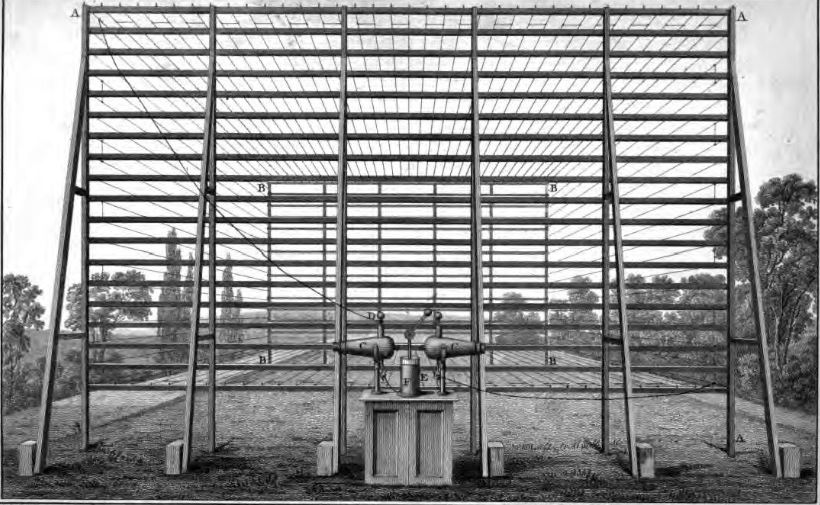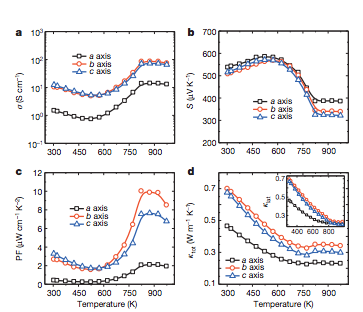|
Georg Wilhelm Munke
Georg Wilhelm Muncke or Georg Wilhelm Munke (28 November 1772, in Hilligsfeld – 17 October 1847, in Großkmehlen) was a German physicist. From 1797 to 1810 he worked as an administrator at the Georgianum in Hanover. In 1810 he became a professor at the University of Marburg, where he gave lectures in mathematics and experimental physics. From 1817 up until his death in 1847 he was a professor of physics at the University of Heidelberg. In 1826 he became an honorary member of the Russian Academy of Sciences. Published works * ''System der atomistischen Physik. Nach den neuesten Erfahrungen und Versuchen dargestellt'' (1809) – System of atomic physics. * ''Handbuch der Naturlehre'', (2 volumes, 1829) – Manual of natural science. * ''Die ersten Elemente der gesammten Naturlehre zum Gebrauche für höhere Schulen und Gymnasien'', 1842 – The first elements of the doctrine of nature. * ''Populäre Wärmelehre; oder, Darstellung des Wesens und Verhaltens der W� ... [...More Info...] [...Related Items...] OR: [Wikipedia] [Google] [Baidu] |
Hilligsfeld
Hameln ( ; ) is a town on the river Weser in Lower Saxony, Germany. It is the capital of the district of Hameln-Pyrmont and has a population of roughly 57,000. Hamelin is best known for the tale of the Pied Piper of Hamelin. History Hameln started with a monastery, which was founded as early as 851 AD; its surrounding village became a town by the 12th century. The incident involving the "Pied Piper" (see below) is said to have occurred in 1284 and may be based on a true event, although somewhat different from the traditional tale. In the 15th and 16th centuries, Hamelin was a minor member of the Hanseatic League. In June 1634, during the Thirty Years' War, Lothar Dietrich, Freiherr of Bönninghausen, a general in the Imperial Army of the Holy Roman Emperor, lost the Battle of Oldendorf to the Swedish General Kniphausen, after Hamelin had been besieged by the Swedish army. The era of the town's greatest prosperity began in 1664, when Hamelin became a fortified border town of ... [...More Info...] [...Related Items...] OR: [Wikipedia] [Google] [Baidu] |
Electromagnetism
In physics, electromagnetism is an interaction that occurs between particles with electric charge via electromagnetic fields. The electromagnetic force is one of the four fundamental forces of nature. It is the dominant force in the interactions of atoms and molecules. Electromagnetism can be thought of as a combination of electrostatics and magnetism, which are distinct but closely intertwined phenomena. Electromagnetic forces occur between any two charged particles. Electric forces cause an attraction between particles with opposite charges and repulsion between particles with the same charge, while magnetism is an interaction that occurs between charged particles in relative motion. These two forces are described in terms of electromagnetic fields. Macroscopic charged objects are described in terms of Coulomb's law for electricity and Ampère's force law for magnetism; the Lorentz force describes microscopic charged particles. The electromagnetic force is responsible for ma ... [...More Info...] [...Related Items...] OR: [Wikipedia] [Google] [Baidu] |
Academic Staff Of Heidelberg University
An academy (Attic Greek: Ἀκαδήμεια; Koine Greek Ἀκαδημία) is an institution of tertiary education. The name traces back to Plato's school of philosophy, founded approximately 386 BC at Akademia, a sanctuary of Athena, the goddess of wisdom and Skills, skill, north of Ancient Athens, Athens, Greece. The Royal Spanish Academy defines academy as scientific, literary or artistic society established with public authority and as a teaching establishment, public or private, of a professional, artistic, technical or simply practical nature. Etymology The word comes from the ''Academy'' in ancient Greece, which derives from the Athenian hero, ''Akademos''. Outside the city walls of Athens, the Gymnasium (ancient Greece), gymnasium was made famous by Plato as a center of learning. The sacred space, dedicated to the goddess of wisdom, Athena, had formerly been an olive Grove (nature), grove, hence the expression "the groves of Academe". In these gardens, the philos ... [...More Info...] [...Related Items...] OR: [Wikipedia] [Google] [Baidu] |
People From Hamelin
The term "the people" refers to the public or common mass of people of a polity. As such it is a concept of human rights law, international law as well as constitutional law, particularly used for claims of popular sovereignty. In contrast, a people is any plurality of persons considered as a whole. Used in politics and law, the term "a people" refers to the collective or community of an ethnic group or nation. Concepts Legal Chapter One, Article One of the Charter of the United Nations states that "peoples" have the right to self-determination. Though the mere status as peoples and the right to self-determination, as for example in the case of Indigenous peoples (''peoples'', as in all groups of indigenous people, not merely all indigenous persons as in ''indigenous people''), does not automatically provide for independent sovereignty and therefore secession. Indeed, judge Ivor Jennings identified the inherent problems in the right of "peoples" to self-determination, as i ... [...More Info...] [...Related Items...] OR: [Wikipedia] [Google] [Baidu] |
1847 Deaths
Events January–March * January 4 – Samuel Colt sells his first revolver pistol to the U.S. government. * January 13 – The Treaty of Cahuenga ends fighting in the Mexican–American War in California. * January 16 – John C. Frémont is appointed Governor of the new California Territory. * January 17 – St. Anthony Hall fraternity is founded at Columbia University, New York City. * January 30 – Yerba Buena, California, is renamed San Francisco. * February 5 – A rescue effort, called the First Relief, leaves Johnson's Ranch to save the ill-fated Donner Party of California-bound migrants who became snowbound in the Sierra Nevada earlier this winter. Some have resorted to survival by cannibalism. * February 22 – Mexican–American War: Battle of Buena Vista – 5,000 American troops under General Zachary Taylor use their superiority in artillery to drive off 15,000 Mexican troops under Antonio López de Santa Anna, defeating the Mexicans the next day. * Fe ... [...More Info...] [...Related Items...] OR: [Wikipedia] [Google] [Baidu] |
1772 Births
Events January–March * January 10 – Shah Alam II, the Mughal Emperor of India, makes a triumphant return to Delhi 15 years after having been forced to flee. * January 17 – Johann Friedrich Struensee and Queen Caroline Matilda are arrested, leading to his execution and her banishment from Denmark. * February 12 ** Breton-French explorer Yves-Joseph de Kerguelen-Trémarec discovers the uninhabited Kerguelen Islands in the Southern Indian Ocean. ** The Virginia Assembly amends an act to describe the punishments for the practice of gouging. * February 17 – The First Partition of Poland is agreed to by Russia and Prussia, later including Austria. * March 8 – Biela's Comet is first discovered by French astronomer Jacques Leibax Montaigne, but not proven to be a periodic comet until 1826, when Wilhelm von Biela correctly identifies its return. * March 20 – Pedro Fages, the Spanish Governor of Alta California, and Juan Crespí, a Cath ... [...More Info...] [...Related Items...] OR: [Wikipedia] [Google] [Baidu] |
Needle Telegraph
A needle telegraph is an electrical telegraph that uses indicating needles moved electromagnetically as its means of displaying messages. It is one of the two main types of electromagnetic telegraph, the other being the armature system, as exemplified by the telegraph of Samuel Morse in the United States. Needle telegraphs were widely used in Europe and the British Empire during the nineteenth century. Needle telegraphs were suggested shortly after Hans Christian Ørsted discovered that electric currents could deflect compass needles in 1820. Pavel Schilling developed a telegraph using needles suspended by threads. This was intended for installation in Russia for government use, but Schilling died in 1837 before it could be implemented. In 1833 Carl Friedrich Gauss and Wilhelm Eduard Weber in Göttingen built a telegraph line that was used for scientific study and communication between university sites. In 1837 Carl August von Steinheil adapted Gauss and Weber's rather cumbe ... [...More Info...] [...Related Items...] OR: [Wikipedia] [Google] [Baidu] |
Johann Samuel Traugott Gehler
Johann Samuel Traugott Gehler (1 November 1751, in Görlitz – 16 October 1795, in Leipzig) was a German lawyer and physicist who lived in the Holy Roman Empire. He studied mathematics, natural sciences and law at the University of Leipzig, obtaining his habilitation for mathematics in 1776 and his law degree the following year. While a student, his influences included physicist Johann Heinrich Winckler. In 1783 he became a city councilman in Leipzig, and from 1786 served as an associate at the Oberhofgericht Leipzig. He is best remembered as the author of a popular dictionary of physical sciences, ''Physikalisches Wörterbuch'', published from 1787 in six volumes. Decades later, the dictionary was edited and re-issued in 11 volumes (1825–45); its editors being Heinrich Wilhelm Brandes, Leopold Gmelin Leopold Gmelin (2 August 1788 – 13 April 1853) was a German chemist. Gmelin was a professor at the University of Heidelberg. He worked on the Potassium ferricyanide, red p ... [...More Info...] [...Related Items...] OR: [Wikipedia] [Google] [Baidu] |
Francis Ronalds
Sir Francis Ronalds Fellow of the Royal Society, FRS (21 February 17888 August 1873) was an English scientist and inventor, and arguably the first History of electrical engineering, electrical engineer. He was knighted for creating the first working electric telegraph over a substantial distance. In 1816 he laid an length of iron wire between wooden frames in his mother's garden and sent pulses using electrostatic generators. He also is known for creating the first electric clock in 1814. Upbringing and family Born to Francis Ronalds and Jane (née Field), wholesale cheesemongers, at their business premises at 109 Upper Thames Street, London, Thames Street, London, he attended Unitarianism, Unitarian minister Eliezer Cogan's school before being apprenticed to his father at the age of 14 through the Worshipful Company of Drapers, Drapers' Company. He ran the large business for some years. The family later resided in Canonbury Place and Highbury Terrace, both in Islington, at K ... [...More Info...] [...Related Items...] OR: [Wikipedia] [Google] [Baidu] |
Electrical Telegraph
Electrical telegraphy is point-to-point distance communicating via sending electric signals over wire, a system primarily used from the 1840s until the late 20th century. It was the first electrical telecommunications system and the most widely used of a number of early messaging systems called '' telegraphs'', that were devised to send text messages more quickly than physically carrying them. Electrical telegraphy can be considered the first example of electrical engineering. Electrical telegraphy consisted of two or more geographically separated stations, called telegraph offices. The offices were connected by wires, usually supported overhead on utility poles. Many electrical telegraph systems were invented that operated in different ways, but the ones that became widespread fit into two broad categories. First are the needle telegraphs, in which electric current sent down the telegraph line produces electromagnetic force to move a needle-shaped pointer into position o ... [...More Info...] [...Related Items...] OR: [Wikipedia] [Google] [Baidu] |
Thermoelectrics
Thermoelectric materials show the thermoelectric effect in a strong or convenient form. The ''thermoelectric effect'' refers to phenomena by which either a temperature difference creates an electric potential or an electric current creates a temperature difference. These phenomena are known more specifically as the Seebeck effect (creating a voltage from temperature difference), Peltier effect (driving heat flow with an electric current), and Thomson effect (reversible heating or cooling within a conductor when there is both an electric current and a temperature gradient). While all materials have a nonzero thermoelectric effect, in most materials it is too small to be useful. However, low-cost materials that have a sufficiently strong thermoelectric effect (and other required properties) are also considered for applications including power generation and refrigeration. The most commonly used thermoelectric material is based on bismuth telluride (). Thermoelectric materials are ... [...More Info...] [...Related Items...] OR: [Wikipedia] [Google] [Baidu] |
Magnetism
Magnetism is the class of physical attributes that occur through a magnetic field, which allows objects to attract or repel each other. Because both electric currents and magnetic moments of elementary particles give rise to a magnetic field, magnetism is one of two aspects of electromagnetism. The most familiar effects occur in ferromagnetic materials, which are strongly attracted by magnetic fields and can be magnetized to become permanent magnets, producing magnetic fields themselves. Demagnetizing a magnet is also possible. Only a few substances are ferromagnetic; the most common ones are iron, cobalt, nickel, and their alloys. All substances exhibit some type of magnetism. Magnetic materials are classified according to their bulk susceptibility. Ferromagnetism is responsible for most of the effects of magnetism encountered in everyday life, but there are actually several types of magnetism. Paramagnetic substances, such as aluminium and oxygen, are weakly attracted ... [...More Info...] [...Related Items...] OR: [Wikipedia] [Google] [Baidu] |










